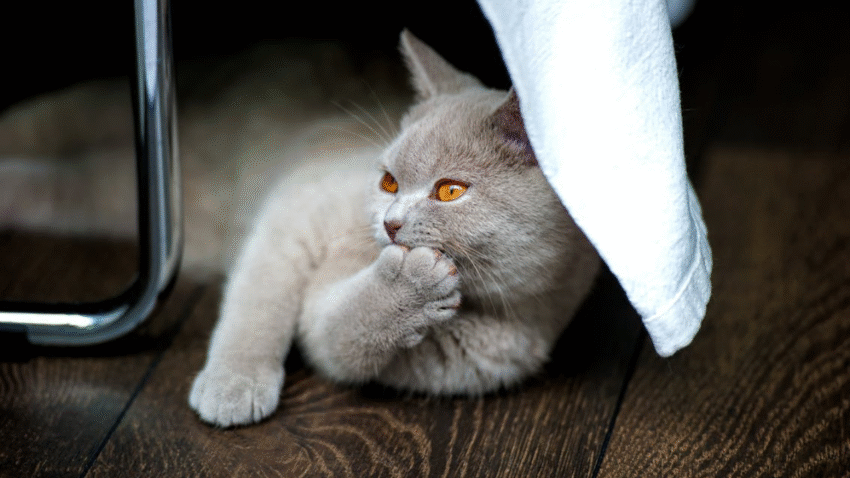Introduction
Want to make sure your cat is living their happiest, healthiest life? A consistent daily care routine is one of the best ways to ensure your feline friend stays physically and emotionally well. In this guide, you’ll learn how to create a balanced, effective daily care routine for your cat. From feeding and grooming to playtime and bonding, we’ll walk you through every step of the ideal cat care schedule.
Why a Daily Routine Matters for Cats
Cats are creatures of habit who thrive on predictable routines. A structured daily schedule helps reduce stress, supports better behavior, and creates a stronger bond between you and your cat. Consistent care also makes it easier to spot health or behavioral issues early, since you’ll notice when something’s out of the ordinary.
A daily cat routine supports:
- Physical health through regular feeding, grooming, and litter box care
- Mental stimulation via play and enrichment
- Emotional stability by providing structure and security
- Stronger trust between you and your cat
Whether you have a kitten, adult cat, or senior, daily routines can be tailored to meet their specific needs.
Step-by-Step Guide to Building a Daily Cat Routine
Step 1: Set Fixed Feeding Times
- Feed your cat at the same times each day—usually morning and evening.
- Measure portions according to your cat’s age, weight, and activity level.
- Provide fresh, clean water at all times. Use a water fountain if your cat prefers running water.
If your cat is on wet and dry food, consider splitting meals accordingly (e.g., wet in the morning, dry at night).
Step 2: Schedule Daily Play Sessions
- Aim for two play sessions of 10–15 minutes each day.
- Use toys that mimic prey, like feather wands or laser pointers, to trigger your cat’s hunting instincts.
- Play before meals to simulate the hunt-eat-groom-sleep cycle.
Regular play helps prevent obesity, reduces boredom, and strengthens your bond with your cat.
Step 3: Maintain the Litter Box
- Scoop the litter box at least once a day, preferably morning and evening.
- Top up clean litter as needed and change the litter completely once a week.
- Clean the box itself with warm water and mild soap during full changes.
Clean litter boxes reduce the risk of infections and discourage inappropriate elimination.
Step 4: Brush and Groom Regularly
- Brush short-haired cats 2–3 times per week; long-haired cats daily to prevent matting.
- Use a soft grooming brush or glove based on your cat’s preference.
- Check ears, eyes, and nails as part of your grooming routine.
Incorporating grooming into your daily care plan helps keep fur healthy and reduces hairballs.
Step 5: Monitor Health and Behavior
- Observe your cat’s eating, drinking, litter box use, and activity levels.
- Look out for signs of illness like vomiting, diarrhea, excessive grooming, or withdrawal.
- Weigh your cat monthly and check their coat and skin for any abnormalities.
Spotting small changes in daily habits can help catch health issues early.
Step 6: Offer Daily Affection and Social Time
- Pet or cuddle your cat in short sessions throughout the day—especially during quiet moments.
- Some cats prefer lap time, while others enjoy simply sitting near you.
- Allow your cat to initiate affection if they’re shy or independent.
Emotional connection is just as important as food and grooming in your cat’s daily care.
Step 7: Create a Calm Sleeping Environment
- Ensure your cat has quiet, cozy places to rest throughout the day.
- Place beds or blankets in high or hidden areas, depending on your cat’s preference.
- Maintain a calm nighttime routine to prevent zoomies and encourage restful sleep.
Cats sleep 12–16 hours a day, so a peaceful environment is key to their health.
Common Mistakes to Avoid
- Free-feeding all day long
Leaving food out can lead to overeating and weight gain. Scheduled meals help with portion control. - Skipping playtime
Even adult and senior cats need daily enrichment to prevent boredom and anxiety. - Neglecting the litter box
Dirty boxes can lead to accidents and behavioral problems. Keep it clean and accessible. - Ignoring signs of stress or illness
Sudden changes in appetite, grooming, or litter use should never be ignored. - Forcing interactions
Let your cat initiate contact. Daily affection should be guided by your cat’s comfort level.
Extra Tips & Recommendations
- Use a daily care checklist to stay organized, especially in multi-cat households.
- Feed at the same time you eat to help create structure and prevent begging.
- Use scheduled alarms for medication or special care if needed.
You might also like: How to keep your indoor cat active and fit and How to recognize signs of feline depression.
Example Daily Cat Routine
| Time | Activity |
|---|---|
| 7:00 AM | Feed breakfast |
| 7:30 AM | Scoop litter box |
| 8:00 AM | Morning play session |
| 12:00 PM | Check water, offer affection |
| 3:00 PM | Brush coat, check ears/eyes |
| 6:00 PM | Feed dinner |
| 6:30 PM | Evening play session |
| 8:00 PM | Scoop litter box, bedtime cuddle |
Conclusion
Creating a daily care routine for your cat isn’t just about feeding or cleaning—it’s about showing consistent love, attention, and support. With a predictable structure in place, your cat will feel more secure, healthy, and bonded to you. It’s a small investment of time that leads to a lifetime of purrs, trust, and companionship.
